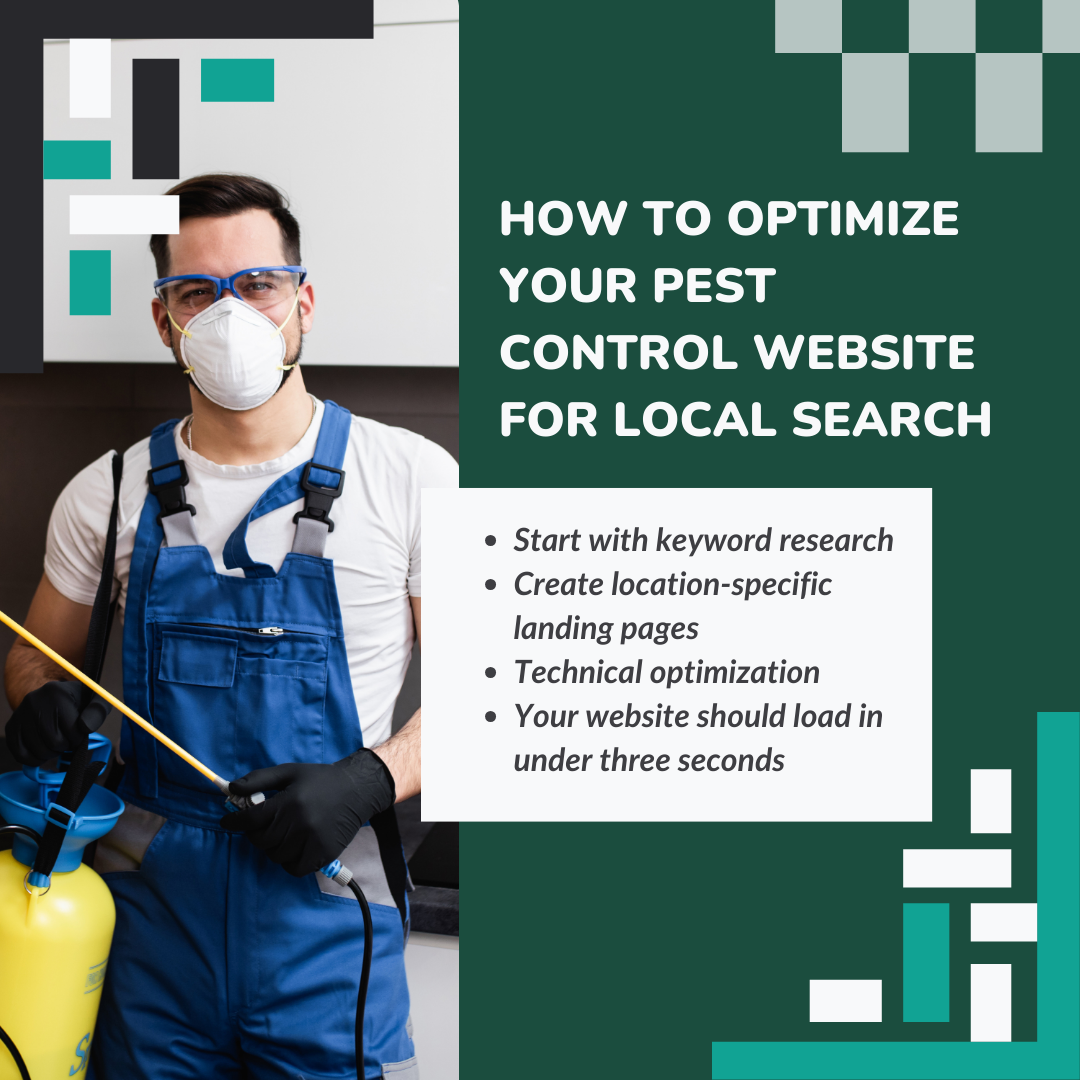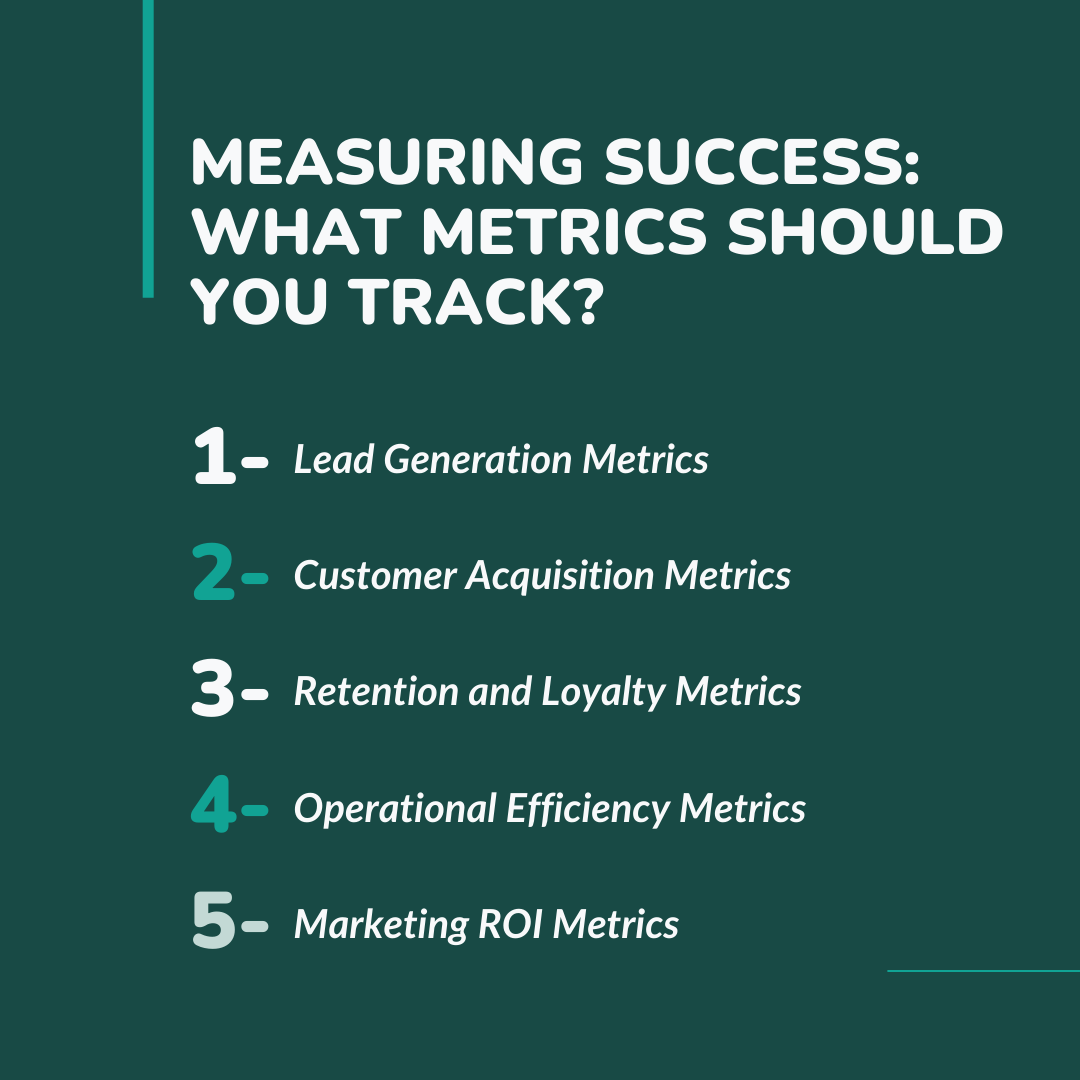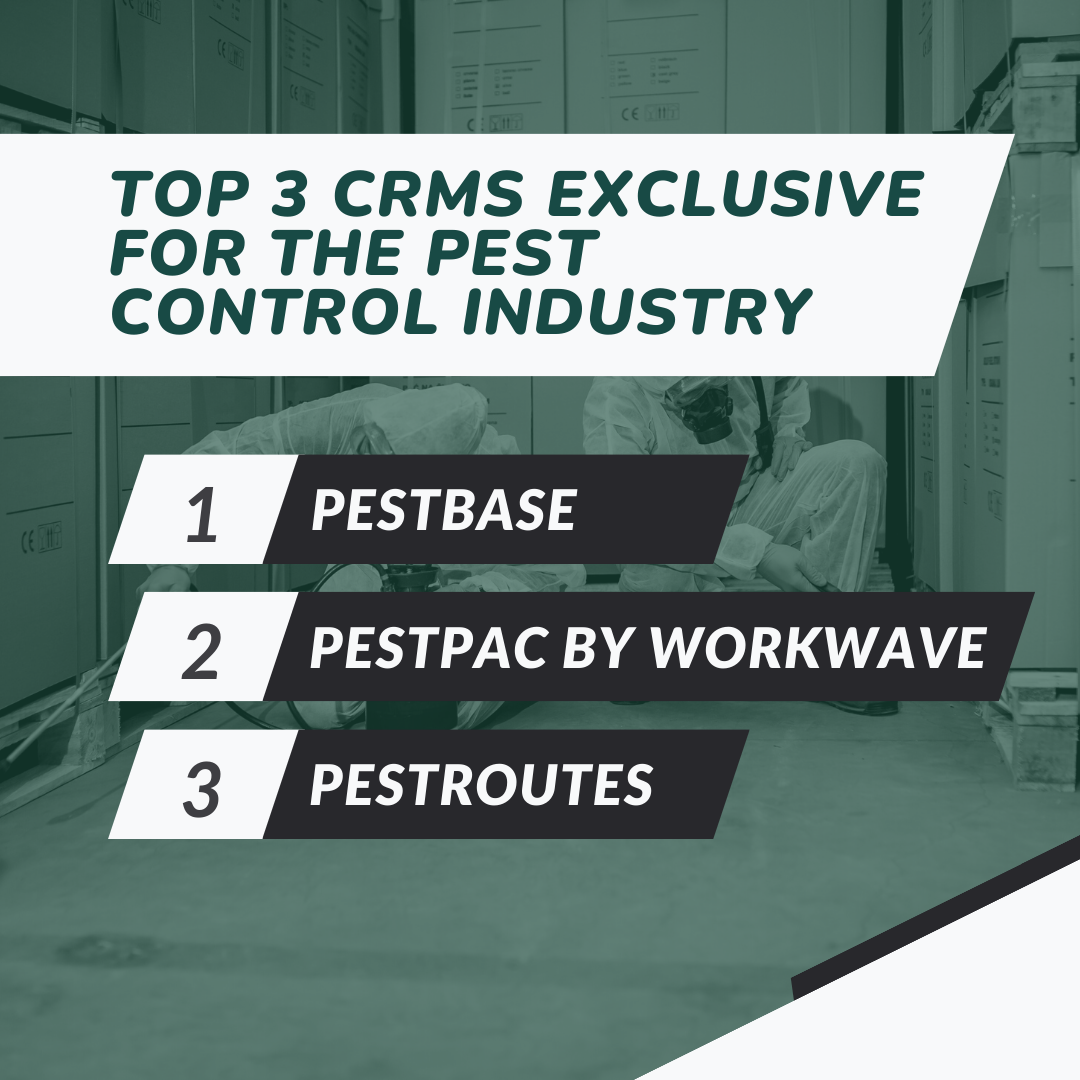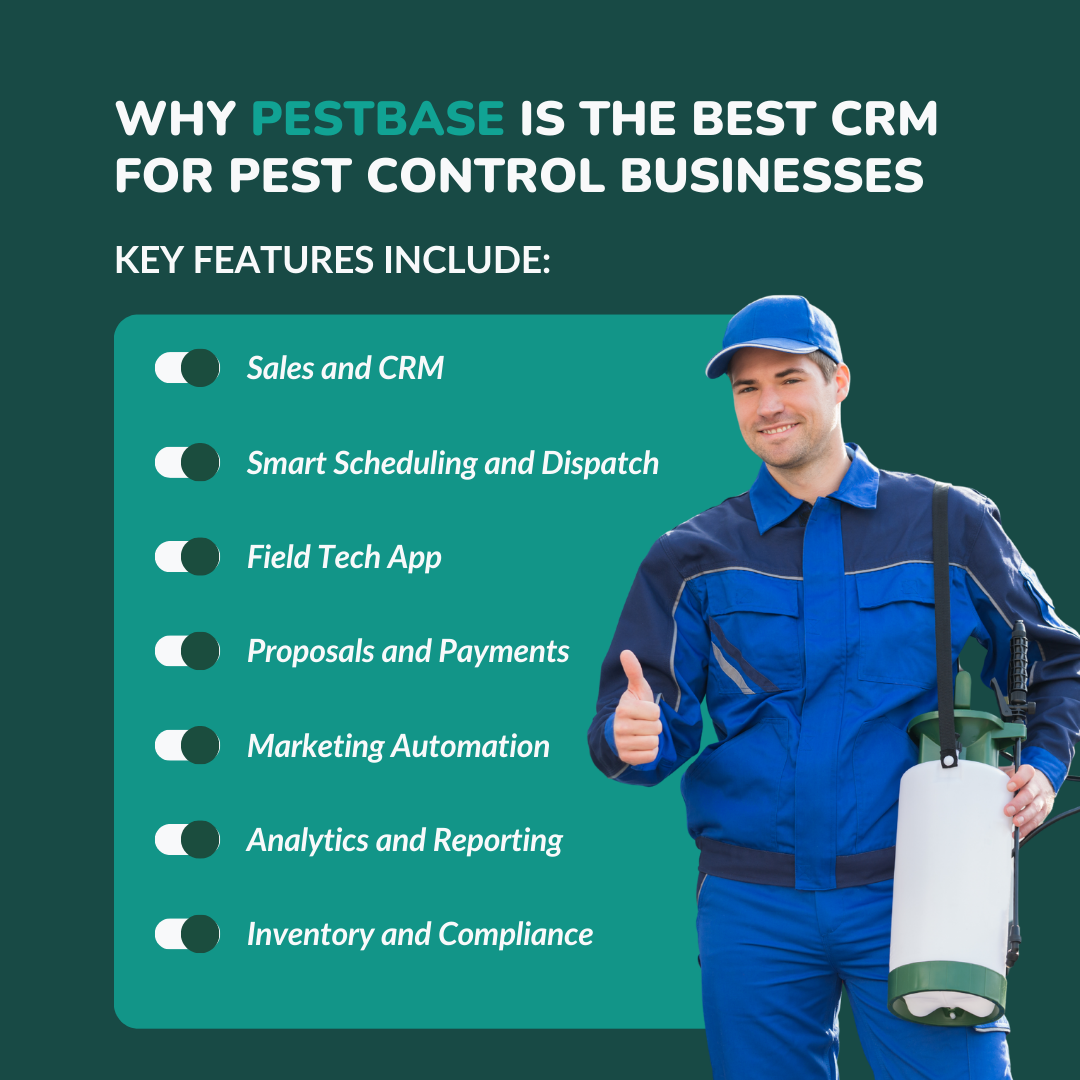September 16, 2025
Why Effective Marketing Matters for Pest Control Companies and how a successful marketing strategy can elevate your business?
Let's picture this: a homeowner spots a trail of ants crawling across their kitchen counter at 10 PM on a Tuesday. They grab their phone and frantically search "pest control near me" to find potential customers for their services. Within seconds, Google serves up three businesses in the local map pack.
Your competitor appears at the top, and yours is nowhere to be found. That potential customer just slipped through your fingers, and it happened in less than 10 seconds.
This scenario plays out thousands of times daily across neighborhoods everywhere. With thousands of pest control businesses operating in the United States as of 2025, standing out in this crowded pest control market isn't just about being good at what you do; it's about being found when customers need you most, which requires a comprehensive pest control marketing plan.
Pest Control Marketing: Local SEO & Referral Tactics for Growing Your Pest Control Businesses
The challenge is real, but so is the opportunity. The pest control industry is thriving, with market size projected to grow from $26 billion in 2025 to $53.1 billion by 2035,
representing a healthy 7.4% CAGR. Smart marketing efforts can help you capture your share of this expanding market while building a loyal customer base that generates consistent revenue year after year.
This guide will walk you through proven local SEO strategies, effective referral systems, and a comprehensive digital marketing strategy with CRM tools specifically designed for pest control companies.
You'll discover how to dominate local search results, build a review-generating machine, and create automated systems that turn one-time customers into lifetime advocates.
Key Takeaways
- Local SEO Delivers Immediate Results: People searching for nearby businesses often visit them within a day, making local search optimization a powerful marketing investment.
- Reviews Drive Purchases: Online reviews are now the top influence on consumer buying decisions, surpassing discounts and coupons.
- Referrals Bring Premium Customers: Referred customers have higher retention rates and spend more than average customers.
- CRM Systems Boost ROI: Companies using CRM software see significant improvements in marketing effectiveness and return on investment.
Understanding Your Target Audience: Who Are Your Ideal Customers?
Before diving into tactics, you need crystal-clear insight into who your pest control customers are and who you're trying to reach.
Pest control marketing isn't one-size-fits-all; a residential homeowner dealing with carpenter ants has completely different needs and decision-making processes than a restaurant manager facing a health department inspection.
- Residential customers typically fall into three categories: emergency responders (immediate pest problem), prevention-minded homeowners (seasonal treatments), and maintenance customers (ongoing service contracts). They're searching for trustworthy, licensed professionals who can solve problems quickly and prevent future issues.
- Commercial clients include: property managers, restaurant owners, healthcare facilities, and retail businesses. They prioritize compliance, documentation, and consistent service delivery. Their decision-making process involves multiple stakeholders and longer consideration periods.
Understanding these differences shapes everything from your Google Ads keywords and Google Analytics to your content marketing strategy.
A homeowner might search "get rid of mice fast," while a property manager searches "commercial pest control compliance documentation."
What Is Local SEO and Why Is It a Game Changer for Pest Control Businesses?
Local SEO is the process of optimizing your digital presence to appear prominently when people search for pest control services in your specific service area.
Think of it as digital territory claiming, you're establishing dominance in the online spaces where your ideal customers are actively looking for help.
Here's why local (SEO) matters more for pest control than almost any other industry:
1. Urgency drives immediate action
Unlike many service industries, pest control often involves urgent situations. When someone discovers termites or a wasp nest, they're not comparison shopping for weeks; they're calling the first credible company they find.
2. Geographic limitations create competitive advantages
You can't treat a termite infestation in Florida from an office in Denver. This geographic constraint means mastering local SEO creates sustainable competitive moats around your service territories.
For pest control specifically, research shows that over 90% of users rely on Google Maps to discover local services, with 75% of local searches leading to a visit or inquiry within 24 hours.
How to Optimize Your Pest Control Website for Local Search

Modern local SEO requires strategic technical implementation combined with valuable, location-specific content.
1. Start with keyword research that matches real search behavior.
Tools like Google Keyword Planner reveal that searchers use phrases like "pest control [city name]," "exterminator near me," and "termite treatment [area]" far more than generic industry terms. For example, "pest control near me" generates 246,000 monthly searches compared to 368,000 for the broader "pest control" term.
2. Create location-specific landing pages for each service area.
These aren't just duplicate pages with different city names; they should include genuinely valuable local information like common pest problems in that area, local regulations, and community-specific testimonials that help to generate pest control leads.
3. Technical optimization
This ensures search engines can find and understand your content. This includes properly structured schema markup, fast loading speeds (especially on mobile, where most local searches occur), and consistent NAP (Name, Address, Phone) information across your website and directory listings.
4. Your website should load in under three seconds.
Google's data shows that most mobile users abandon sites that take longer. Since most mobile searches are location-related, a slow-loading site directly impacts your local visibility.
The Power of Online Reviews and Reputation Management
Online reviews, especially positive reviews combined with email marketing, have evolved beyond simple feedback; they're now powerful ranking signals and conversion drivers that directly impact your bottom line.
The numbers are staggering: A significant percentage of consumers read reviews before making decisions, with many checking Google reviews before visiting a business.
But here's what makes reviews especially crucial for pest control trust. Homeowners are inviting you into their most personal space and trusting you with chemicals around their families and pets. Reviews provide the social proof needed to bridge that trust gap.
Reviews drive rankings and conversions simultaneously: Google uses review quantity, frequency, and ratings as ranking factors for local search results, making pest control marketing crucial.
The correlation between reviews and revenue is direct: a one-star increase can lead to a 5-9% rise in revenue. For a pest control company generating $500,000 annually, that's potentially $45,000 in additional revenue from improved reviews alone.
Managing reviews requires a systematic approach rather than hoping for the best. Only 29% of satisfied customers naturally leave reviews, meaning you need structured
processes to capture feedback from your happy customers. Companies that respond to reviews see 56% higher customer preference rates compared to those that ignore them.
Leveraging Google Ads to Boost Local Visibility
1. Google Ads
While organic local SEO builds long-term visibility, Google Ads provides immediate placement in front of high-intent customers. For pest control companies, paid search offers unique advantages because emergency situations create customers ready to purchase immediately.
2. Local keyword targeting
It maximizes ad spend efficiency. Rather than competing nationally for expensive broad terms, focus on geo-targeted phrases like "emergency pest control [city]" or "termite inspection [neighborhood]." These searches typically have lower competition but higher conversion rates.
3. Ad extensions
Enhance visibility and provide multiple contact methods. Location extensions show your address and distance from the searcher. Call extensions enable one-click calling, crucial for mobile users. Additionally, sitelink extensions can highlight specific services like "Emergency Service" or "Free Inspection."
4. Landing page alignment
Determines conversion success. Your ads should direct traffic to specific, relevant landing pages rather than your homepage. An ad for "ant control" should lead to a dedicated ant control page with relevant information, local testimonials, and clear conversion paths.
5. Integrated CRM systems
Track performance through integrated CRM systems that attribute phone calls, form submissions, and ultimately closed customers back to specific ad campaigns. This data-driven approach allows continuous optimization of ad spend toward your highest-converting keywords and geographic areas.
Social Media Marketing: Building Relationships and Referrals
Social media for pest control isn’t about hard selling; it’s about educating, reassuring, and building trust.
1. Right platforms: Use Facebook and Nextdoor for local engagement and testimonials; Instagram and YouTube for before/after visuals; and don’t ignore younger audiences on TikTok and Instagram, where many now search locally.
2. Using Hail Trace Data: This is for Storm Response Sales Mix educational posts (seasonal pest tips, ID guides) with social proof (reviews, case studies). As many individuals place the same level of trust in online reviews as they do in personal recommendations, showcasing testimonials can be incredibly impactful.
3. Community engagement: Join local groups, sponsor events, and share helpful neighborhood updates to position yourself as a trusted part of the community.
4. CRM integration: Track leads from social channels; while it may not drive instant bookings, it strongly shapes customer decisions before they call.
Content Marketing: Educate to Attract and Retain Customers
Content marketing in pest control builds trust and authority while boosting search engine optimization. By answering customer questions and covering local pest trends, you position your business as the go-to expert.
1. Seasonal and local content: Create blogs like “Spring Termite Prevention in [City]” or “Fall Rodent Exclusion Tips” to capture local traffic and show relevance.
2. FAQ-driven topics: Answer real customer searches like “How much does termite treatment cost?” or “Are chemicals safe for pets?” to address objections before calls even come in.
3. Visual content: Use before/after photos, pest ID guides, and treatment videos, highly shareable assets that boost credibility. Pairing visuals with reviews amplifies conversion (products with 5+ reviews are 270% more likely to sell).
4. Multi-channel distribution: Repurpose blogs into social posts, email tips, and even direct mail inserts. With a CRM, you can effectively generate leads, track engagement, and double down on what works best.
5. Local authority: Cover pest problems specific to your region, along with seasonal infestations and compliance rules. This builds expertise that competitors struggle to match.
Building an Effective Referral Program
Referral marketing is a highly effective strategy for pest control companies, as people trust recommendations from real estate agents more than advertisements.
Many consumers rely on referrals, and a substantial number of small businesses acquire most of their customers through word-of-mouth.
Referred customers are valuable; they convert better, close deals faster, and tend to spend more over time. However, only a small percentage of satisfied customers provide referrals without prompting, so a structured referral program is essential.
Companies offering double-sided rewards, benefits for both the referrer and the new customer, typically see higher conversion rates and more referrals. Using a Customer Relationship Management (CRM) system, you can automate tracking, rewards, and follow-ups, making the referral process more efficient.
Great referral incentives for pest control include:
- Service credits for referrals
- Discounts on seasonal treatments
- Priority scheduling
- Annual plan discounts
Direct Mail and Offline Marketing: Still Relevant?
Even in the digital age, direct mail remains a powerful channel for pest control businesses, often outperforming digital in response and ROI.
Higher response rates: Direct mail averages 4.9%, versus just 0.6% for email. Targeted seasonal neighborhood mailings can see 20–30% higher results.
Longer lifespan: Mail stays in homes for 17 days, compared to 17 seconds for email, ensuring visibility when pest problems arise.
Perfect for local targeting: You can reach neighborhoods prone to infestations, new constructions, or specific demographics.
Stronger impact when integrated: Combining direct mail with digital campaigns increases conversions by 28% and brand recall by 75%.
A balanced strategy, around 40% traditional, 60% digital, helps capture both online searches and offline attention, giving your pest control company a wider reach and a stronger community presence.
Measuring Success: What Metrics Should You Track?

1. Lead Generation Metrics
- Cost per lead by channel: Measures how much you spend across marketing campaigns (SEO, paid ads, mail campaigns) to get one pest control customer.
- Lead-to-customer conversion rates: Shows the % of leads that become paying local customers.
- Time from lead to closed sale: Tracks how quickly prospects turn into recurring customers.
- Lead source attribution accuracy: Identifies which marketing tools (local service ads, social media platforms, or offline strategies) bring the most valuable insights.
2. Customer Acquisition Metrics
- Customer acquisition cost (CAC) by marketing channel: Compares the expense of getting new pest control customers via SEO, paid ads, or digital strategy.
- Average customer lifetime value (LTV): Tells how much one loyal customer is worth over contracts, renewals, and service reminders.
- LTV to CAC ratio: A deeper understanding of ROI; it should be at least 3:1 to ensure growth.
- New customer growth rate: Tracks the increase in your customer base through campaigns and referrals.
3. Retention and Loyalty Metrics
- Customer retention rate: Measures how well you keep existing customers loyal and reduce churn.
- Service contract renewal rates: Percentage of customers continuing pest control services each cycle.
- Revenue per customer: Shows average revenue earned per customer, including seasonal pest infestations.
- Referral generation rate: Tracks how many satisfied customers are bringing in new ones.
4. Operational Efficiency Metrics
- Average response time to inquiries: How quickly you answer questions from prospects via web pages, calls, or social media.
- Appointment scheduling efficiency: Measures how seamlessly your team books new services.
- Route optimization savings: Highlights reduced cost and travel time for technicians, boosting campaign performance.
- Customer satisfaction scores: Feedback from local customers that reflects loyalty and service quality.
5. Marketing ROI Metrics
- Return on marketing investment by channel: Shows how much revenue each strategy (SEO, paid ads, offline strategies) generates.
- Cost per acquisition by campaign: Tells the ad spend needed to secure one new pest control customer.
- Revenue attribution to marketing activities: Maps which campaigns (mail campaigns, local service ads, SEO) drive the most organic traffic and sales.
- Marketing qualified leads vs. sales qualified leads: Differentiates between leads who just visit your web pages and those who are ready to book pest control services.
With a CRM like PestBase, you can track all these KPIs in one dashboard, gain actionable insights, and build a pest control marketing strategy that delivers long-term growth.
How CRM Systems Enhance Marketing and Operations
CRM systems transform pest control companies into growth engines by managing the entire customer lifecycle, from lead capture to recurring contracts, on a single platform.
- They significantly boost ROI, with many businesses reporting increases, some up to 300%.
- Automated follow-ups like service reminders and surveys help prevent revenue loss and improve customer retention.
- CRMs also provide actionable insights, tracking which marketing channels bring your best customers, shortest sales cycles, and highest retention, so you can invest smarter.
- Operationally, they cut costs through route optimization, smarter scheduling, and real-time customer communication, helping teams serve more customers in less time.
Top 3 CRMs Exclusive for the Pest Control Industry

1. PestBase
Platform: Cloud-based, mobile-first CRM built for pest control businesses
Best For: Local pest control companies that want to streamline marketing, sales, and field operations
Target Market: Small to mid-sized pest control businesses and multi-location service providers
Core Strengths: All-in-one workflow management, from lead capture to service reminders, payments, and review requests
Key Features:
- Smart scheduling and dispatch powered by Google Maps
- Automated marketing campaigns (email, SMS, review requests)
- Lead capture integrated with your Google Business Profile
- Mobile app for technicians (job history, e-signatures, photo uploads)
- Inventory, compliance, and invoicing tools
- Creates branded proposals and accurate estimates in minutes, with e-signature capabilities.
- Assigns jobs with drag-and-drop calendars, auto-notifies technicians, and manages routes in real-time.
Price Range: Flexible, affordable plans for growing pest control companies
Ease of Use: Designed for business owners with no tech background
Highlights: Pestbase helps local businesses generate leads, boost customer loyalty, and improve campaign performance while saving hours daily.
2. PestPac by WorkWave
Platform: Enterprise-level pest control management software
Best For: Larger pest control companies needing detailed compliance and reporting tools
Target Market: Established businesses serving multiple territories or operating at scale
Core Strengths: Powerful reporting, multi-location management, and enterprise integrations
Key Features:
- Detailed compliance tracking and inspection documentation
- Route optimization via Google Maps for efficient field coverage
- Advanced analytics for ROI tracking and marketing campaign performance
- CRM integrated with Google Business Profile updates for local visibility
- Automated billing, contracts, and service reminders
- Automates marketing campaigns, including email, SMS, and review requests, to engage customers and drive business growth.
- Tracks materials used during services, ensuring accurate inventory management and compliance.
Price Range: Higher-end pricing tailored to enterprise needs
Ease of Use: Feature-rich but requires onboarding support for full adoption
Highlights: PestPac is a powerhouse for pest control businesses focused on scale, compliance, and long-term customer retention with detailed, actionable insights.
3. PestRoutes (FieldRoutes)
Platform: Cloud-based pest control CRM with mobile accessibility
Best For: Small-to mid-sized pest control companies looking for efficiency in scheduling, billing, and customer engagement
Target Market: Local business owners seeking to streamline field service operations
Core Strengths: Easy-to-use scheduling, automated billing, and marketing integrations
Key Features:
- Drag-and-drop scheduling to easily assign, reschedule, or adjust technician jobs on an interactive calendar
- Route optimization via real-time maps for faster, fuel-efficient travel and increased technician productivity
- Comprehensive dashboards and reporting visuals to monitor revenue, technician performance, and service trends
- Real-time dashboards with charts and performance metrics on revenue, technician productivity, customer churn, and service trends.
- Connect FieldRoutes with accounting tools, payment gateways, GPS tracking, marketing platforms, and more via open API.
- Centralize customer, contract, and service data to streamline office and field operations from a single platform
- Automated customer communication, including service reminders, follow-ups, and invoice notifications via email or SMS
- Lead and pipeline tracking to give full visibility of prospects, conversions, and customer activity history
- Marketing support with referral tracking, upsell prompts, and customer review management to boost retention
Price Range: Mid-tier, scalable plans for growing pest control firms
Ease of Use: Intuitive UI designed for fast setup and minimal training
Highlights: PestRoutes helps business owners track every customer touchpoint, maximize recurring customers, and run consistent marketing campaigns with clarity.
Take a look at this: Best Pest Control Software for Small Businesses (2025 Guide)
Common Pitfalls and How to Avoid Them
Many pest control companies waste money by making these common mistakes:
1. Relying on One Channel: Overdependence on a single marketing channel is risky. Using multiple channels boosts conversions and brand recognition.
2. Skipping Follow-ups: Retaining customers is cheaper than acquiring new ones. Increasing retention can significantly boost profits. Use CRM automation for follow-ups.
3. Neglecting Local SEO and Reviews: A significant number of clicks go to businesses in the Google Map Pack, while poor reviews deter customers. So, focus on local SEO and reputation management.
4. Poor Data Management: Without a CRM system, you waste ad spend and lack insights. Many businesses use CRM for better data management.
5. Inconsistent Messaging: Mixed signals across your website and marketing can undermine trust. Therefore, ensure clear and professional branding everywhere.
Why PestBase Is the Best CRM for Pest Control Businesses

Generic CRMs can’t fully handle the unique needs of pest control, like recurring services, compliance, and seasonal demand. But PestBase is built exclusively for marketing pest control companies, from solo operators to large teams, bringing all operations into one powerful platform.
Key features include:
1. Sales and CRM
Easily capture new leads, send quick quotes, and keep track of every customer’s history so you never miss an opportunity to build stronger relationships.
2. Smart Scheduling and Dispatch
Plan routes intelligently, track real-time job updates, and send automatic notifications to customers so everyone stays in the loop.
3. Field Tech App
Give technicians everything they need in their pocket: job details, chemical tracking, photo uploads, and digital signatures so they can focus on getting the work done right.
4. Proposals and Payments
Create professional estimates on the spot, collect e-signatures, and get paid faster with instant invoicing and secure online payment options.
5. Marketing Automation
Keep your brand top of mind with automated review requests, referral tracking, seasonal follow-ups, and targeted email campaigns.
6. Analytics and Reporting
Get a clear picture of your business with reports on ROI, customer retention, revenue trends, and technician performance
7. Inventory and Compliance
Stay organized and audit-ready by managing chemical usage, equipment, and compliance documents all in one place.
By integrating everything, from sales to service, marketing, and compliance, PestBase saves time, improves customer loyalty, and helps pest control businesses scale with confidence.
Conclusion: Taking Control of Your Pest Control Marketing
The pest control market is full of opportunity, but success comes down to smart, consistent marketing. By focusing on local SEO, building trust through reviews, encouraging referrals, utilizing paid advertising, and streamlining operations with a CRM, you can create long-term growth and stronger customer relationships.
Start small, stay consistent, and build on what works. With the right strategy in place, your business will stand out in the community and be the first choice when customers need reliable pest control services.
About PestBase
PestBase is the all-in-one CRM built exclusively for pest control businesses, streamlining leads, scheduling, payments, and marketing in one place. It helps local business owners save hours, boost customer loyalty, and grow profitably without tech headaches.
Don’t just manage your pest control business, scale it smarter with Pestbase today!
FAQs
What is pest marketing?
Promoting pest control services to attract and retain customers through SEO, ads, referrals, and content.
How to market a pest control business?
Use local SEO, get reviews, run Google Ads, offer referral rewards, and use CRM to track leads.
Who is the target market for pest control?
Homeowners with pest issues and businesses needing compliance and regular service.
Can you make $100K in pest control?
Yes, with smart marketing, retention, and referrals, six figures is achievable.
Can a CRM really save me time? How?
Yes, a pest control-specific CRM like Pestbase automates follow-ups, reminders, review requests, and scheduling, saving pest control businesses 2–3 hours a day while boosting lead conversions
